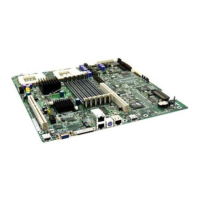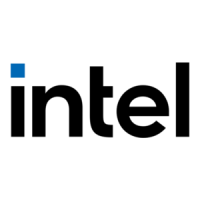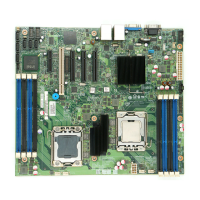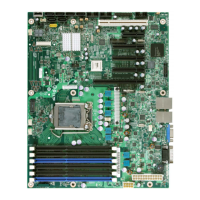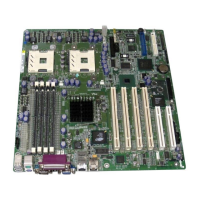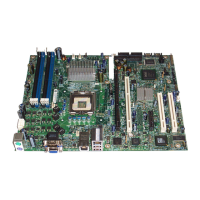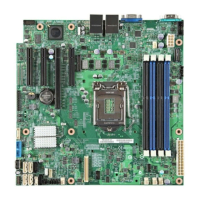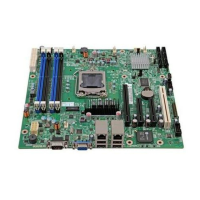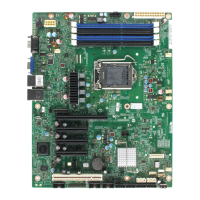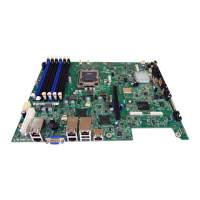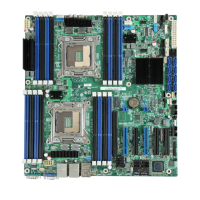Intel® Server Boards S5520HC, S5500HCV, and S5520HCT TPS Platform Management
Revision 1.8
Intel order number E39529-013
61
4. Platform Management
The platform management subsystem is based on the Integrated BMC features of the
ServerEngines* Pilot II. The onboard platform management subsystem consists of
communication buses, sensors, and the system BIOS, and server management firmware.
Figure 27 provides an illustration of the Server Management Bus (SMBUS) architecture as used
on these server boards.
4.1 Feature Support
4.1.1 IPMI 2.0 Features
• Baseboard management controller (BMC).
• IPMI Watchdog timer.
• Messaging support, including command bridging and user/session support.
• Chassis device functionality, including power/reset control and BIOS boot flags
support.
• Event receiver device: The BMC receives and processes events from other platform
subsystems.
• Field replaceable unit (FRU) inventory device functionality: The BMC supports access
to system FRU devices using IPMI FRU commands.
• System event log (SEL) device functionality: The BMC supports and provides access
to a SEL.
• Sensor data record (SDR) repository device functionality: The BMC supports storage
and access of system SDRs.
• Sensor device and sensor scanning/monitoring: The BMC provides IPMI
management of sensors. It polls sensors to monitor and report system health.
• IPMI interfaces:
- Host interfaces include system management software (SMS) with receive
message queue support and server management mode (SMM).
- IPMB interface.
- LAN interface that supports the IPMI-over-LAN protocol (RMCP, RMCP+).
• Serial-over-LAN (SOL)
• ACPI state synchronization: The BMC tracks ACPI state changes provided by the
BIOS.
• BMC Self-test: The BMC performs initialization and run-time self-tests, and makes
results available to external entities.
See also the Intelligent Platform Management Interface Specification Second Generation v2.0.
4.1.2 Non-IPMI Features
The BMC supports the following non-IPMI features. This list does not preclude support for future
enhancements or additions.
In-circuit BMC firmware update
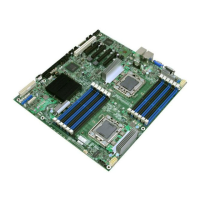
